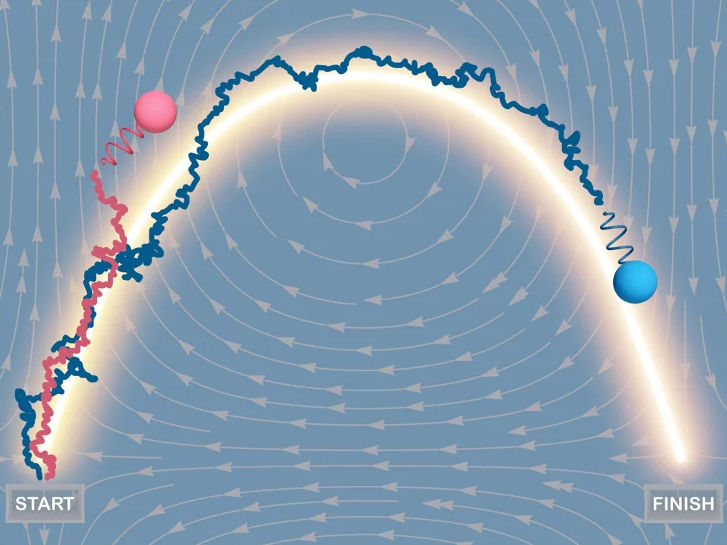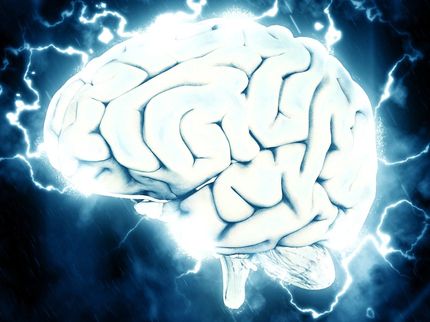When making a detour is faster
Novel navigation strategies for microscopic swimmers
Autonomous optimal navigation of microswimmers is in fact possible, as researchers from the Max Planck Institute for Dynamics and Self-Organization (MPI-DS) showed. In contrast to the targeted navigation of boats, the motion of swimmers at the microscale is strongly disturbed by fluctuations. The researchers now described a navigation strategy for microswimmers that does not need an external interpreter. Their findings may contribute to the understanding of transport mechanisms in the microcosm as well as to applications such as targeted drug delivery.

Two microswimmers adapt their orientation to stay close to the illuminated path and reach the target faster. Making this detour can be highly beneficial since the straight way would lead them against the current (indicated by the grey arrows)
© MPI-DS
Whereas the shortest way between two points is a straight connection, it might not be the most efficient path to follow. Complex currents often affect the motion of microswimmers and make it difficult for them to reach their destination. At the same time, making use of these currents to navigate as fast as possible is a certain evolutionary advantage. Whereas such strategies allow biological microswimmers to better access food or escape a predator, microrobots could this way be directed to perform specific tasks.
The optimal path in a given current can readily be determined mathematically, yet fluctuations perturb the motion of microswimmers and deviate them from the optimal route. Thus, they have to readjust their motion in order to account for environmental changes. This typically requires the help of an external interpreter and takes away their autonomy.
“Thanks to evolution, some microorganisms have developed autonomous strategies that enable directed motion towards larger concentration of nutrients or light,” first author of the study Lorenzo Piro explains. Inspired by this idea, the researchers from the Department of Living Matter Physics at the MPI-DS designed strategies that allow microswimmers to navigate optimally in a nearly autonomous way.
Light as a guide for autonomous navigation
When an external interpreter defines the navigation pattern, microswimmers on average follow a well-defined path. Thus, it is a good approach to guide the microswimmer along that path within the current. This can be achieved autonomously via external stimuli, despite the presence of fluctuations. This principle could be applied to swimmers that respond to variation of light, such as certain algae, in which case the optimal path can simply be illuminated. Remarkably, the resulting performances are comparable to externally supervised navigation. “These new strategies can moreover conveniently be applied to more complex scenario such as navigation on curved surfaces or in presence of random currents,” concludes Ramin Golestanian, director at MPI-DS.
Possible applications of the study thus range from targeted drug delivery at the microscale to the optimal design of autonomous micromachines.
Original publication
Other news from the department science

Get the life science industry in your inbox
By submitting this form you agree that LUMITOS AG will send you the newsletter(s) selected above by email. Your data will not be passed on to third parties. Your data will be stored and processed in accordance with our data protection regulations. LUMITOS may contact you by email for the purpose of advertising or market and opinion surveys. You can revoke your consent at any time without giving reasons to LUMITOS AG, Ernst-Augustin-Str. 2, 12489 Berlin, Germany or by e-mail at revoke@lumitos.com with effect for the future. In addition, each email contains a link to unsubscribe from the corresponding newsletter.





















































